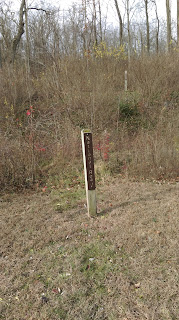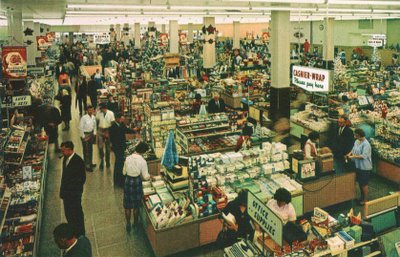The National Road and the canal fell out of favor for the same reason; the rail could carry people and goods further, faster and more cheaply. However, it was the 1913 flood that inundated Dayton that ended the village of Tadmor. The flood destroyed most of the village as well as the canal. The National Road, which once cut across the Great Miami River on a covered bridge, was re-routed after the construction of the Taylorsville Dam. The rail line was also re-routed so that it would be further away from the river.
There is little interpretation at the site currently and is mainly used for outdoor recreation. Bicycling and hiking are common there today. There are a handful of interpretive signs though they offer little detail.
 |
| This one says "National Road" |
There are other signs at the site that offer more detail than the one pictured but they are still very broad in scope. Much of the site is overgrown with existing foundations of structures such as the sluice gate for the canal crumbling. I am seeking, with my classmates, to turn things around at Tadmor by creating and presenting an interpretive plan that, if implemented, will re-vitalize the site and teach people about this little-known part of local history.
Source: Materials at Vandalia Historical Society




















